FR4 PCB: The Ultimate Guide to Material, Properties, and Applications
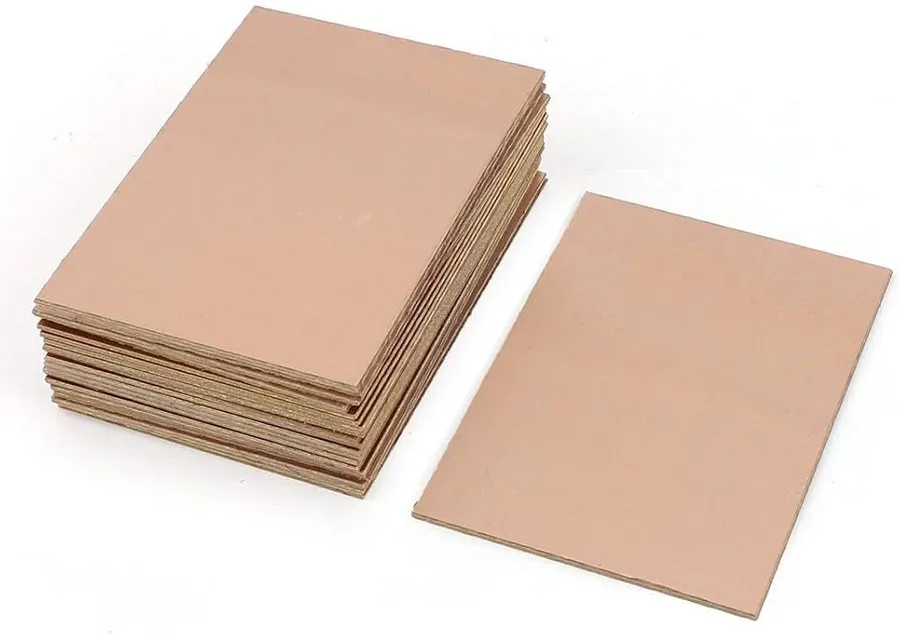
From the intricate electronics in our smartphones to the complex systems in aerospace, printed circuit boards (PCBs) form the backbone of modern technology. Among the various materials used, FR4 stands out as the workhorse of PCB fabrication. This article delves deep into the world of FR4 PCB, exploring its composition, properties, advantages, and limitations. We'll bridge the gap between fundamental understanding and practical application, illuminating why FR4 remains the most popular choice for a wide range of electronic devices.
What is FR4 Material?

FR4, a ubiquitous term in PCB manufacturing, is not a material itself but rather a National Electrical Manufacturers Association (NEMA) grade designation for a composite material. This composite primarily consists of woven fiberglass cloth impregnated with an epoxy resin binder. It serves as the foundational substrate for the vast majority of printed circuit boards due to its balance of cost, performance, and manufacturability. The specific composition of FR4, the type of glass weave, the epoxy chemistry and the manufacturing process determine the material's final properties.
The term 'flame retardant' is a crucial aspect of FR4's classification. The 'FR' in FR4 stands for flame retardant, indicating that the resin used in the composite has been formulated to self-extinguish when exposed to a flame. This is achieved through the inclusion of specific chemical additives in the epoxy resin which hinder the propagation of fire. This is a critical safety aspect for electronic components, as this flame retardancy reduces the risk of fire in electronic devices that may develop an electrical short or similar problem. The standards for flame retardancy in FR4 are outlined by Underwriters Laboratories (UL) standard 94V-0, a key specification for electronic materials.
Key Properties of FR4 PCB
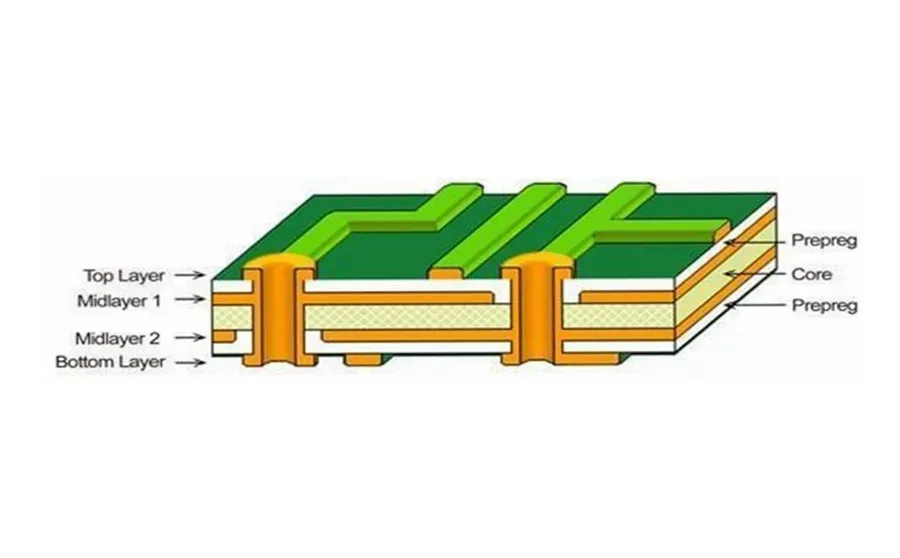
FR4 PCBs possess a combination of mechanical, electrical, thermal, and chemical properties that determine their suitability for various applications. These properties, resulting from the composite structure of fiberglass and epoxy resin, are critical for designers to consider when selecting FR4 for their printed circuit boards.
| Property | Typical Value | Significance |
|---|---|---|
| Tensile Strength | Typically 250-400 MPa | Measures the force required to break the material; indicates mechanical robustness. |
| Flexural Strength | Typically 350-500 MPa | Measures resistance to bending. Crucial for PCB handling and assembly. |
| Dielectric Constant (Dk) | Typically 4.2-4.8 @ 1MHz | Affects signal impedance; lower Dk is preferable for high-speed circuits. |
| Dissipation Factor (Df) | Typically 0.02 or less @ 1MHz | Measures signal loss; lower Df is ideal for high-frequency circuits. |
| Glass Transition Temperature (Tg) | Typically 130-180 °C (standard FR4), 170-210°C (high Tg) | The temperature at which the material begins to soften; higher Tg for higher temperature operations. |
| Thermal Conductivity | Typically 0.2 - 0.3 W/m·K | Measures the rate of heat transfer; lower conductivity can lead to heat accumulation. |
| Water Absorption | Typically 0.1 - 0.2 % | Indicates how much moisture the material absorbs over time. Affects dielectric properties and long-term stability. |
| Flammability Rating | UL94 V-0 | FR4 is self-extinguishing. Essential for fire safety. |
Understanding these properties allows designers to make informed decisions about material selection, particularly when it comes to balancing cost with performance requirements. Variations in these properties can exist based on the specific FR4 variant used, such as standard Tg versus high-Tg FR4, and it's critical to review the specific datasheets.
Advantages of Using FR4 in PCBs
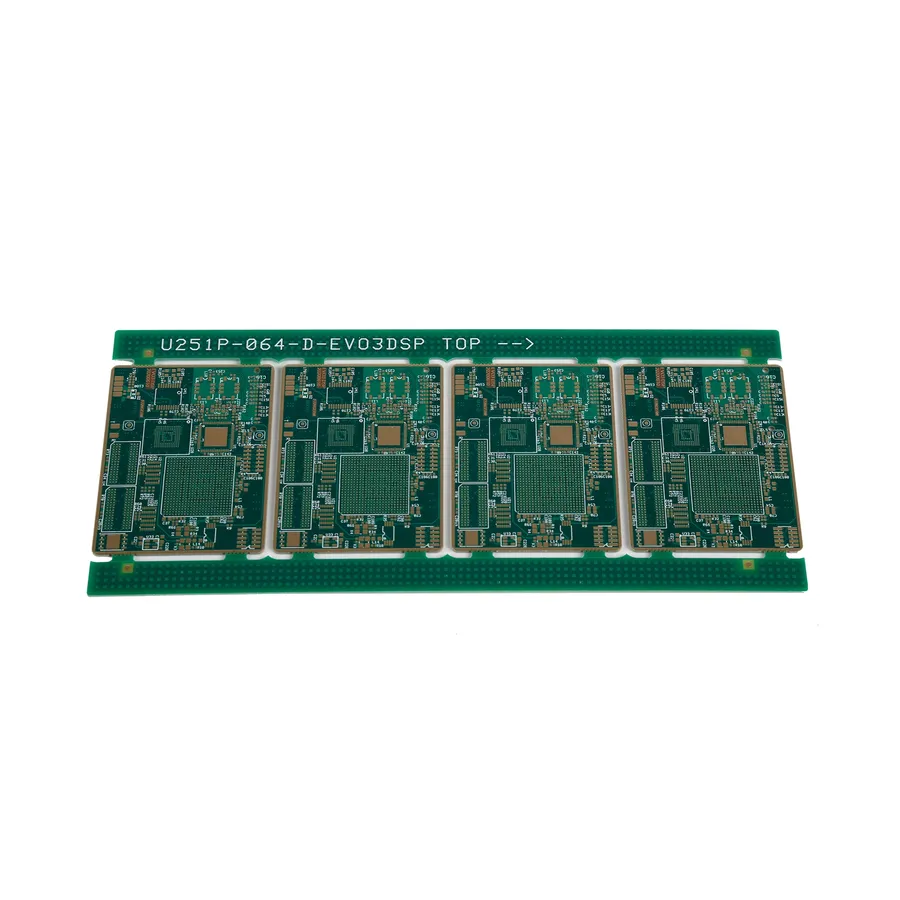
FR4's widespread adoption in PCB manufacturing stems from a combination of advantageous properties. Its versatility, cost-effectiveness, and balance of electrical and mechanical characteristics make it a staple material for a vast range of electronic applications.
- Excellent Electrical Insulation
FR4 provides a high degree of electrical insulation, crucial for preventing short circuits and ensuring proper signal transmission within the PCB. This property is quantified by its dielectric strength and volume resistivity, making it a reliable choice for low to medium voltage applications. - High Strength-to-Weight Ratio
FR4 possesses a remarkable strength-to-weight ratio which allows for the fabrication of mechanically robust PCBs without adding excessive weight. This is particularly important for portable and space-constrained applications. The fiberglass weave embedded in the epoxy resin contributes to the structural integrity of the PCB. - Flame Retardant Properties
FR4's designation indicates it is flame-retardant (FR), meaning it is formulated to self-extinguish when exposed to a flame, thus reducing the risk of fire propagation. This is a critical safety feature that makes FR4 compliant with various safety and regulatory standards such as UL94. The '4' designation references a specific UL rating indicating the material is self-extinguishing within 10 seconds. - Good Chemical Resistance
FR4 demonstrates good resistance to a variety of chemicals encountered during manufacturing and normal use. This chemical inertness ensures that the PCB retains its integrity even in harsh environmental conditions. This resistance can be crucial in industrial settings or in applications where PCBs may be exposed to cleaning agents or other chemicals. - Cost-Effectiveness
FR4 is a relatively inexpensive material, especially when considering its performance attributes. This economic advantage makes FR4 the preferred choice for mass production of PCBs. The availability of raw materials and mature manufacturing processes contribute to its low cost. - Ease of Manufacturing
FR4 PCBs are easy to fabricate using standard PCB manufacturing techniques, including drilling, etching, and plating. This ease of processing contributes to shorter production times and reduced manufacturing costs. Its properties allow for both manual and automated processing, which improves output and quality.
Limitations and Disadvantages of FR4 PCBs
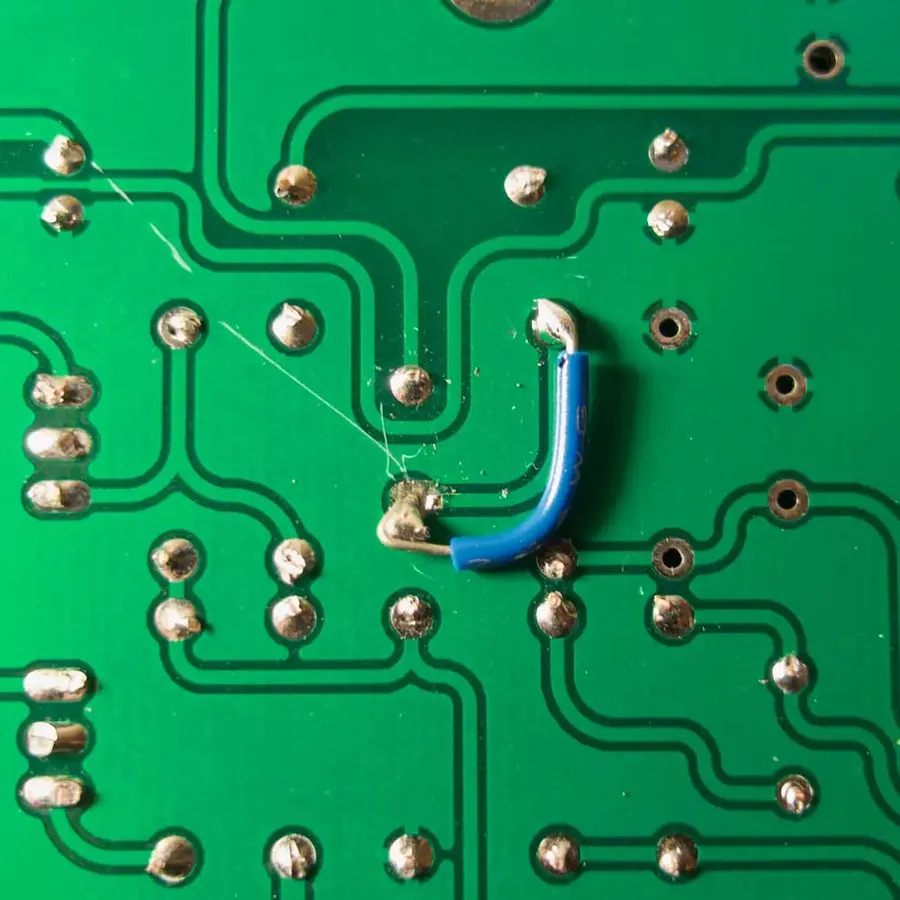
While FR4 is a ubiquitous and versatile material for printed circuit boards, it is crucial to acknowledge its limitations, especially when considering demanding applications. These limitations primarily revolve around its performance at high frequencies and temperatures, its moderate thermal conductivity, and its dimensional stability challenges.
At high frequencies, the dielectric constant and loss tangent of FR4 can become more prominent, leading to signal degradation. As frequency increases, the electrical properties of FR4 can lead to signal losses and impedance mismatches, which is particularly problematic for high-speed digital and RF applications. Furthermore, its moderate thermal conductivity can impede heat dissipation, particularly in high-power applications. This can lead to localized heating, potentially affecting performance and reliability of electronic components. Additionally, dimensional instability, mainly caused by fluctuations in temperature or humidity, can affect the performance and long-term reliability of the circuit. These limitations make FR4 less suitable for specific high-performance applications where more advanced materials are required.
| Limitation | Description | Impact on Performance | Potential Solutions |
|---|---|---|---|
| High-Frequency Limitations | Increased dielectric losses at higher frequencies. | Signal degradation, impedance mismatch. | Use materials with lower loss tangents like Rogers materials or more complex designs such as impedance controlled tracks. |
| Thermal Conductivity | Relatively low thermal conductivity compared to metal core PCBs | Heat build up, reduced component reliability | Employ heat sinks, metal cores, or thermal vias for improved heat dissipation. |
| Dimensional Instability | Expansion and contraction due to temperature and humidity. | Potential for warping and reduced long-term reliability. | Consider using higher-grade FR4 materials or incorporating specific design features to mitigate movement or to use other materials which are less susceptible to this |
| Temperature Limitations | Operational limitations in environments with extreme temperatures. | Reduced performance, component damage | Employ thermal management techniques or consider high-temperature laminates like polyimide. |
FR4 PCB Thickness and Layering
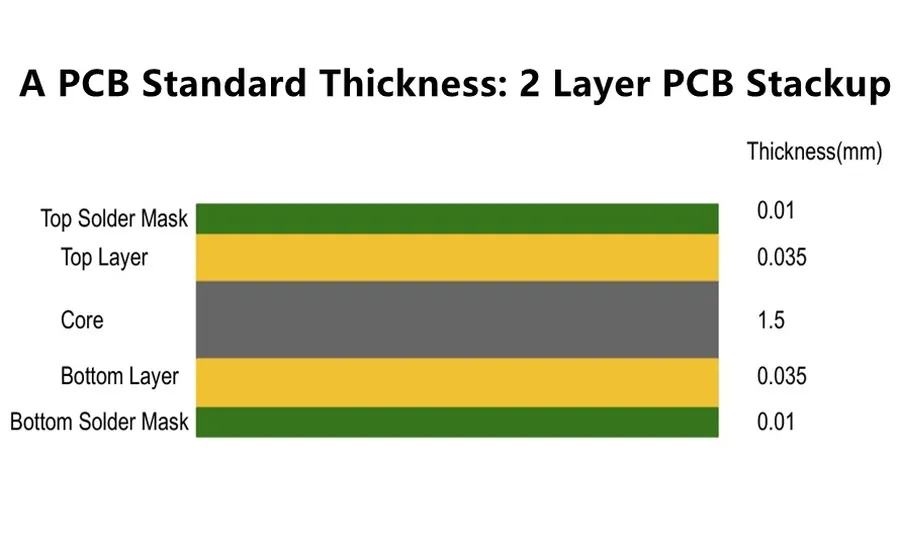
The thickness and layering of an FR4 PCB are critical design considerations that directly impact its performance, cost, and application suitability. Standard thicknesses offer flexibility for different project requirements, while layering techniques allow for complex circuit designs with optimized signal integrity and power distribution. This section delves into the typical thickness options and layering strategies for FR4 PCBs.
| Standard FR4 PCB Thickness | Typical Application | Pros | Cons |
|---|---|---|---|
| 0.2 mm (0.0079") | Flexible circuits, miniature devices | Lightweight, highly flexible | Fragile, not suitable for heavy components |
| 0.4 mm (0.016") | Small form factor devices, wearables | Thin and lightweight | Limited mechanical strength and not suitable for heavy components |
| 0.8 mm (0.031") | General-purpose electronics, portable devices | Good balance between flexibility and strength | Limited space for complex designs |
| 1.0 mm (0.039") | General-purpose electronics, portable devices | Good mechanical strength, adequate for most applications | Slightly less flexible than thinner options |
| 1.6 mm (0.063") | Standard thickness for most PCBs, industrial equipment | Robust, readily available, cost-effective | Can be bulky for small devices |
| 2.0 mm (0.079") and above | High-power applications, heavy-duty equipment | High strength, good heat dissipation | Higher cost, can be excessively bulky |
Beyond thickness, the layering of an FR4 PCB is fundamental to its functionality. The number of layers determines the complexity of the circuitry that can be accommodated. The most common configurations are single-layer, double-layer, and multi-layer PCBs.
| PCB Layer Type | Description | Advantages | Disadvantages |
|---|---|---|---|
| Single-Layer | Components and traces on one side of the board | Simple design, lowest cost, fastest manufacturing | Limited complexity, difficult routing of complex designs |
| Double-Layer | Components and traces on both sides of the board | Increased design flexibility, better component density | More complex than single-layer |
| Multi-Layer | Three or more layers of conductive traces separated by insulating layers | Highest complexity designs, high component density, optimized signal integrity, excellent power distribution | Most expensive, complex manufacturing |
The choice of PCB thickness and layering depends heavily on the application requirements. Thinner boards are often used in applications that prioritize weight and space, while thicker boards are used in applications requiring structural rigidity and high current carrying capacity. Layering is determined by the complexity of the circuit design. Single-layer boards are used for simple circuits; double-layer boards are employed for moderately complex circuits, and multi-layer boards are used in high-density circuits such as those found in advanced computing and communications equipment.
FR4 PCB Manufacturing Processes
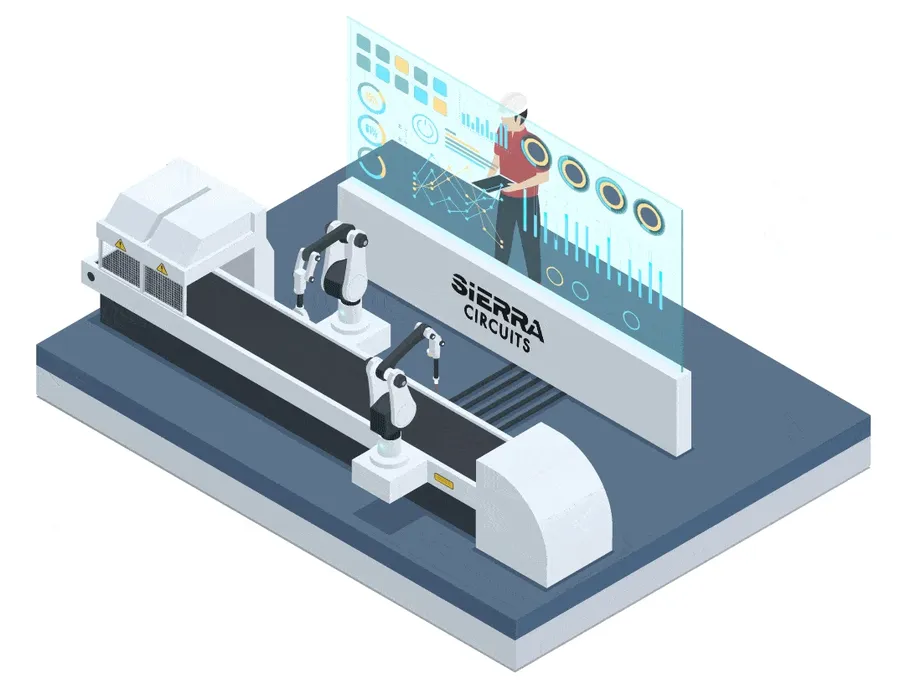
The transformation of raw FR4 material into a functional printed circuit board involves a series of precise manufacturing processes. These steps are critical to the performance and reliability of the final product, and understanding them is key for designers to make informed choices. The core processes encompass lamination, drilling, etching, and plating, each requiring specific controls and tolerances.
| Manufacturing Process | Description | Impact on Performance |
|---|---|---|
| Lamination | Multiple layers of FR4 material and copper foil are bonded together using heat and pressure. | Proper lamination ensures uniform dielectric properties and prevents delamination, which can cause circuit failures. |
| Drilling | Holes are created using precision drilling machines to accommodate vias and component leads. | Accurate drilling is vital for component placement and reliable inter-layer connections. Errors can cause misalignment and short circuits. |
| Etching | Unwanted copper is chemically removed to define the circuit traces and pads. | Precise etching is critical for achieving the desired trace widths and impedance control. Over-etching or under-etching can lead to performance issues. |
| Plating | A layer of metal (typically copper) is deposited onto the exposed copper surfaces to increase conductivity and provide a solderable finish. | Adequate plating ensures reliable electrical connections and solder joints. |
| Solder Mask Application | A protective layer of solder mask is applied to prevent short circuits and protect traces from environmental damage. | Solder mask accuracy is crucial to avoid exposing pads and preventing solder bridges |
| Silkscreen Printing | Text and symbols are printed on the board for component identification and assembly. | Clear silkscreen allows for proper assembly of the components and troubleshooting if issues arise. |
The interplay between these processes requires meticulous control and monitoring. Even slight variations can lead to significant differences in the final product. Choosing the correct manufacturing parameters, such as drilling speed, etching time, and plating thickness, directly impacts the performance and reliability of the board. Designers must work closely with manufacturers to ensure that the PCB meets all specifications.
FR4 vs Other PCB Materials: A Comparative Analysis
Selecting the right PCB material is crucial for ensuring optimal performance and reliability in electronic devices. FR4 is a popular choice, but it's essential to understand how it stacks up against other materials like CEM-1, polyimide, and metal core PCBs. This section provides a detailed comparison, highlighting the strengths and weaknesses of each material across key parameters.
| Material | Cost | Thermal Conductivity | Dielectric Constant | Max Operating Temperature | Mechanical Strength | Typical Applications |
|---|---|---|---|---|---|---|
| FR4 | Low to Medium | Low (0.3 W/mK) | 4.5 | 130°C | Good | General-purpose PCBs, consumer electronics, most applications |
| CEM-1 | Low | Low | 4.2-4.8 | 110°C | Moderate | Single-sided PCBs, less demanding applications |
| Polyimide | High | Moderate (0.4-0.6 W/mK) | 3.5 | 260°C | Excellent | High-temperature applications, flexible circuits, aerospace |
| Metal Core (e.g., Aluminum) | Medium to High | High (up to 237 W/mK for Aluminum) | Variable (with dielectric layer) | Varies by dielectric layer, often >150°C | Good | LED lighting, power electronics, thermal management |
The table above provides a concise overview. Consider these aspects when selecting a material:
- Cost:
FR4 and CEM-1 offer cost-effective solutions, ideal for budget-conscious projects. Polyimide and metal core PCBs have higher costs due to their superior performance capabilities. - Thermal Management:
Metal core PCBs excel in dissipating heat, making them ideal for high-power applications. Polyimide offers better thermal conductivity than FR4 and CEM-1. FR4 offers low thermal conductivity, which can cause issues at higher operating temperatures. - Electrical Properties:
FR4 has acceptable dielectric properties for many applications. Polyimide offers a lower dielectric constant, improving signal integrity at higher frequencies. - Temperature:
Polyimide and metal core PCBs are suited for higher temperatures, while FR4 and CEM-1 are better in lower temperature use cases. - Mechanical:
FR4 has good mechanical strength, making it suitable for many applications. Polyimide offers excellent mechanical strength and is good for flexible applications. CEM-1 has moderate mechanical strength. - Application:
FR4 is used for general purposes, including consumer and industrial electronics. CEM-1 is used in low performance single sided PCB designs. Polyimide is used for aerospace applications and high temperature environments, while metal core PCBs are used when heat dissipation is a priority such as LED lighting.
Ultimately, the best material is the one that best matches the needs of the application. Consider the trade-offs between cost, performance, and availability when making your selection. For many applications, FR4 offers a great balance of cost and performance, while other materials offer distinct advantages in specific situations.
Frequently Asked Questions About FR4 PCBs
This section addresses common questions and concerns regarding FR4 PCBs, providing concise and authoritative answers to help users make informed decisions about their application in electronic devices. We aim to clarify key aspects of FR4 material properties and usage.
- What are the primary limitations of FR4 PCBs?
FR4 PCBs exhibit limitations primarily in high-frequency applications, where signal loss and impedance mismatches can become problematic. They also have moderate thermal conductivity, which can lead to overheating in high-power applications. Additionally, dimensional stability can be affected by temperature and humidity changes. - Is FR4 material waterproof, and how does moisture affect it?
FR4 itself is not inherently waterproof; it is water-resistant. Prolonged exposure to moisture can lead to water absorption, which can affect its electrical properties, such as the dielectric constant and dissipation factor. This is especially problematic in humid or wet environments, leading to performance degradation or failure. - What is the difference between IMS (Insulated Metal Substrate) and FR4 PCBs?
IMS PCBs use a metal base (typically aluminum) as a heat sink, which provides significantly better thermal performance than FR4 PCBs. While FR4 offers good electrical insulation, IMS excels in dissipating heat, making it suitable for high-power applications. FR4 is a cost-effective general purpose substrate while IMS is more costly but offers superior thermal management. - How does FR4's flammability rating affect its use in different applications?
FR4 is typically rated as UL94V-0, indicating that it is flame retardant and self-extinguishing. While this helps in preventing the spread of fire, the material can still burn and produce smoke, thus fire safety measures should still be in place. This flammability rating makes it safer for use in many consumer and commercial applications, however, application specific guidelines and certification requirements should be observed. - Can FR4 be used in high-temperature environments?
FR4's glass transition temperature (Tg) typically ranges from 130°C to 180°C, depending on the specific resin system. While it can operate at temperatures below its Tg, its mechanical and electrical properties degrade at higher temperatures. It is not suitable for high-temperature applications and may deform or fail. Alternative materials with higher Tg and temperature capabilities should be considered for such uses. - What are the typical dielectric properties of FR4 material and why are they important?
FR4 typically has a dielectric constant (Dk) around 4.2 to 4.8 and a dissipation factor (Df) around 0.02. These properties affect the signal integrity and impedance of the traces on the PCB. It is important to ensure proper signal transmission. Consistent Dk and Df values are critical to ensure predictable signal transmission and minimise signal distortion or losses, especially in high speed circuits. Variations in these properties can lead to impedance mismatches and signal reflection. - What is the typical cost range for FR4 PCBs?
FR4 PCBs are generally cost-effective due to the readily available materials and ease of processing. However, the cost is influenced by various factors such as the board size, layer count, complexity of the design, production volumes, and manufacturing tolerances. Specific cost ranges depend on these design parameters and the chosen manufacturer.
Applications of FR4 PCBs
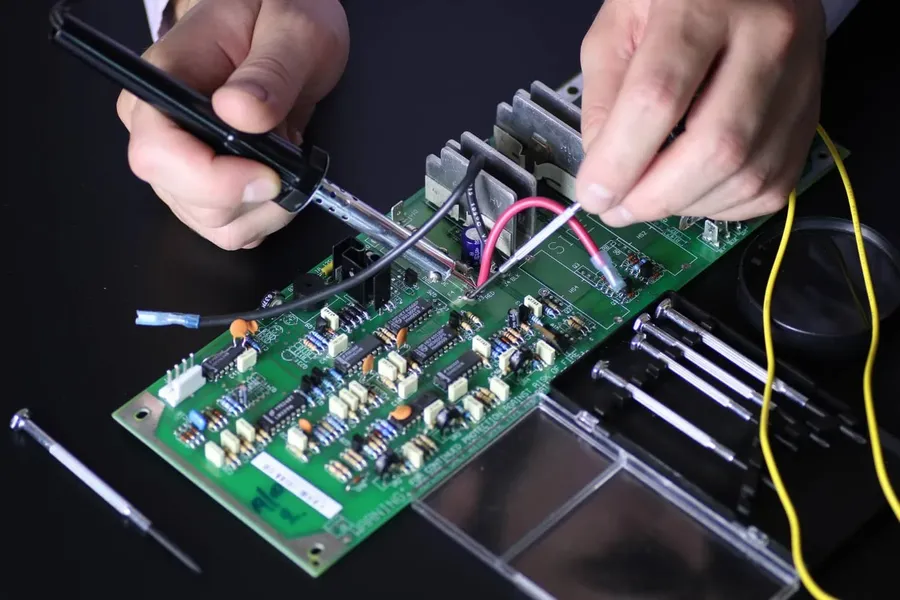
FR4 PCBs are ubiquitous in modern electronics due to their versatility, cost-effectiveness, and desirable properties. This section explores the broad spectrum of applications where FR4 PCBs are employed, highlighting their role across various industries.
- Consumer Electronics
FR4 is the dominant material for PCBs in consumer electronics such as smartphones, laptops, tablets, and home appliances. Its balance of cost, performance, and manufacturability makes it ideal for these high-volume applications. - Computer Hardware
From motherboards and expansion cards to memory modules and power supplies, FR4 PCBs are essential components in computers and other related peripherals. Their electrical properties and mechanical strength meet the demands of these critical applications. - Industrial Control Systems
In industrial settings, FR4 PCBs are found in control systems, automation equipment, and data acquisition devices. They provide the necessary durability and reliability for these rugged environments. - Telecommunications Equipment
Networking equipment, routers, switches, and other telecommunications hardware utilize FR4 PCBs due to their good electrical performance and reasonable cost. While high-frequency applications may require specialized materials, FR4 remains suitable for the majority of telecom applications. - Automotive Applications
FR4 PCBs are increasingly used in automotive electronics, including engine control units (ECUs), infotainment systems, and advanced driver-assistance systems (ADAS). Their ability to withstand varying temperatures and mechanical stresses makes them suitable for these demanding environments. Specific attention is paid to the FR4 glass transition temperature. - Medical Devices
Medical equipment, such as diagnostic tools, monitoring systems, and imaging devices, commonly use FR4 PCBs. Their electrical insulation properties and biocompatibility (when combined with appropriate surface finishes) make them appropriate for medical applications. - Aerospace and Military
While aerospace and military applications sometimes require higher-performance materials, FR4 is still employed in many non-critical applications within these sectors due to its cost-effectiveness and reliability for less critical components and systems. Attention is paid to the quality and reliability of the FR4 in these sectors.
In conclusion, FR4 PCBs are a versatile and reliable solution for a wide array of electronic applications. Their balance of cost-effectiveness, electrical insulation, and mechanical strength makes them a staple in the PCB industry. While not perfect for every situation, understanding the properties and limitations of FR4 helps engineers and designers make informed decisions, ensuring both performance and cost efficiency. This guide will serve as a comprehensive resource for navigating the complexities of FR4 PCB selection and implementation and further solidify its dominance in PCB fabrication.
 AnyPCBA
AnyPCBA